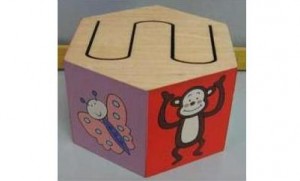The US is far more active than Canada in detecting lead in consumer products, and in requiring that they be withdrawn from the market. The Centers for Disease Control post a fascinating list of high lead consumer products, many of them marketed for children, which can no longer be sold in the US. It is harder for Canadian parents to avoid such products.
Lead is commonly used in consumer products because it is cheap, durable, easy to manufacture, and brightly colored. As recently as last month, the US and Canada jointly banned a “Love. Hugs. Peace” lapel pin. In June, the US, but not Canada, banned a wooden animal drum and 75,000 American Girl Crafts Pearly Beads & Ribbon Bracelets kits. The list of banned products looks very ordinary, just the sort of inexpensive consumer items that fill many stores.
Since November 25, 2010, Canada has had regulations banning the sale of most baby toys and mouth contact products containing more than 90 mg per kilo of lead: see the Consumer Products Containing Lead (Contact with Mouth) Regulations under the Hazardous Products Act. However, few imported consumer products are tested for heavy metals. The US detects these products earlier, in part because of widespread requirements for blood lead level testing and reporting. High American blood lead levels, especially in inner-city boys, are known to have significant neurological and cognitive effects. Most lead contamination comes from historic sources, such as leaded gasoline and lead-based paints, but contamination of consumer products can be a significant new source.

